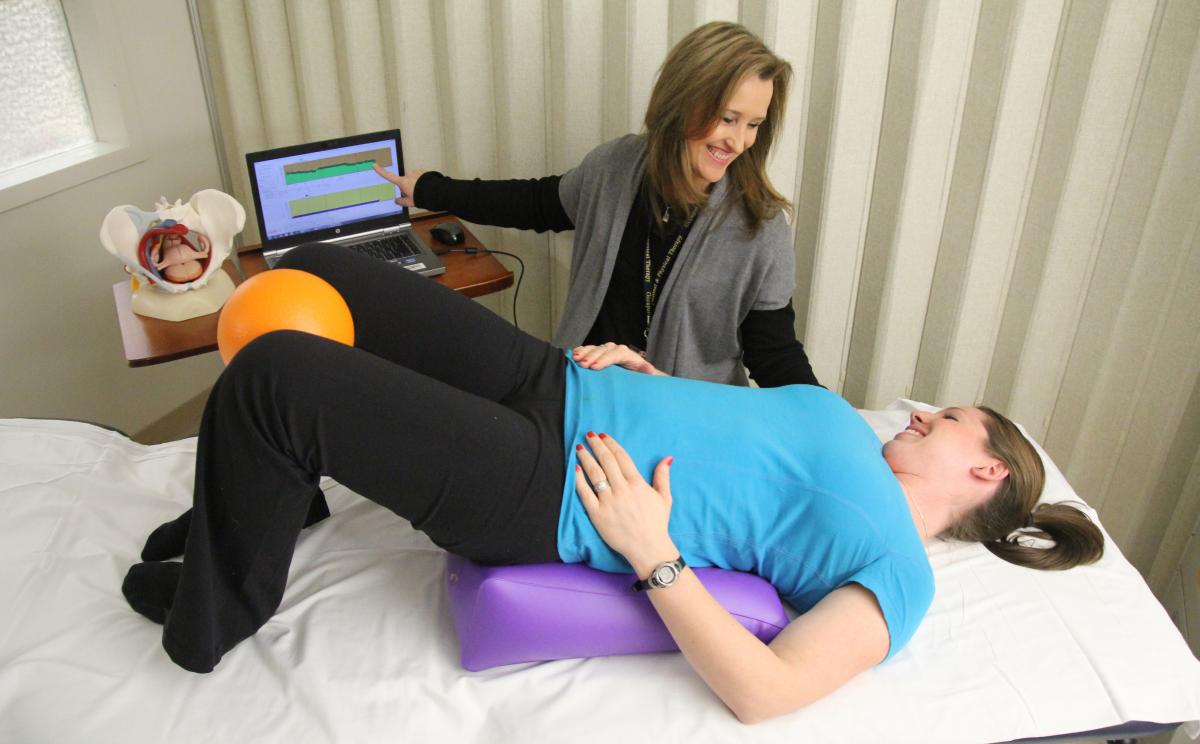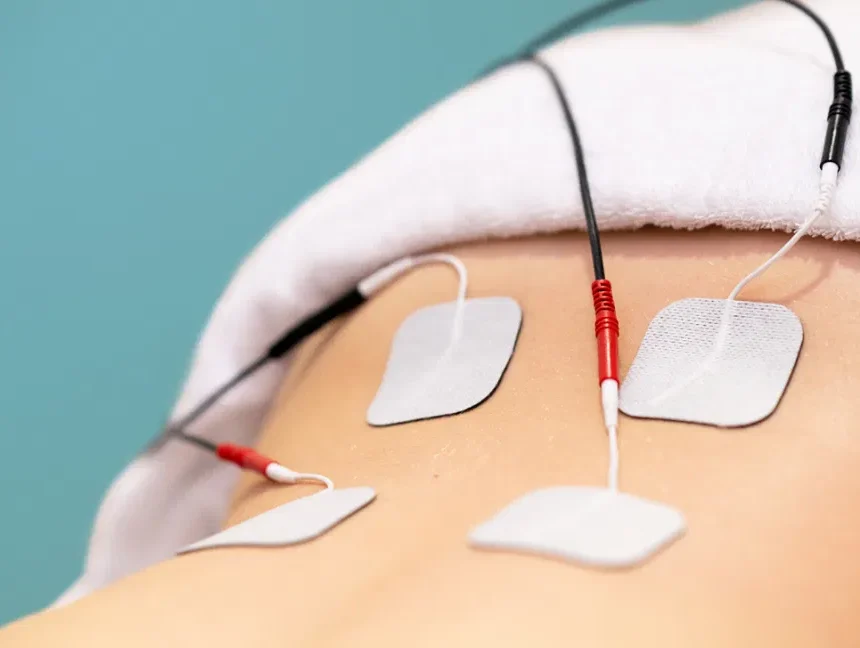Pelvic Floor Physical Therapy Dubai
Discover your individual constitution (Pelvic Floor Therapy Dubai) through the Ayurvedic Body Analysis at Rama Clinic. Our experts use this ancient healing system to unveil your unique combination of elements, guiding you towards a personalized approach to health and well-being. Through careful examination and analysis, we tailor recommendations based on your constitution, helping you achieve balance and vitality. Unlock the secrets to optimal health with our Ayurvedic Body Analysis at Rama Clinic.

WHAT IS PELVIC FLOOR Therapy Dubai and DYSFUNCTION?
Pelvic floor dysfunction is when the muscles in your pelvis, which help you pee and poop, don’t work well. Imagine your pelvis as a house for organs like your bladder, uterus, prostate, and rectum. The muscles in your pelvis act like the foundation of the house, supporting everything.
Normally, your body tightens and relaxes these muscles when you go to the bathroom. It’s like how your biceps tighten when you lift something heavy or when you clench your fist. But with pelvic floor dysfunction, these muscles stay tight instead of relaxing.
This tension can cause problems like:
- Issues with sexual activity
- Pain in your pelvic area
- Trouble peeing or pooping
We Provided All Types Of Pelvic Floor Therapy
Make An Appointment

What are the symptoms of pelvic floor dysfunction?
The following signs and symptoms can let you know you might have a pelvic floor issue:
- Frequent bathroom visits.
- Having to frequently start and stop when you’re trying to pee.
- Straining or pushing to pass a bowel movement.
- Having to change positions on the toilet or use your hand to eliminate stool.
- Constipation (Experts estimate that up to half of the people with long-term constipation also have pelvic floor dysfunction).
- Leaking stool (fecal incontinence).
- Leaking urine (urinary incontinence).
- Painful urination.
- Unexplained low back pain.
- Ongoing pain in your pelvic region, genitals or rectum — with or without a bowel movement.
What causes pelvic floor dysfunction?
Experts don’t know the exact cause of pelvic floor dysfunction. But, a few known factors may play a role. These include:
Traumatic injuries to your pelvic area (like a car accident or a fall from a high place).
Overusing your pelvic muscles (straining to go).
Prior pelvic surgery (like a hysterectomy or prostatectomy).
Pregnancy and childbirth (especially difficult deliveries).
Aging (muscles naturally weaken somewhat over time).
Stress and anxiety.
Connective tissue disorders.


What conditions can be mistaken for pelvic floor dysfunction?
Pelvic floor dysfunction can exist alongside (and be mistaken for) many other conditions, including:
- Interstitial cystitis: This problem makes your pelvis or bladder hurt. The pain can make your pelvic floor muscles tense. If you have one of these issues, it makes it more likely for you to have the other one too.
- Irritable bowel syndrome (IBS): IBS is a set of symptoms that mess with your stomach and digestion. Even though experts haven't found a direct connection between IBS and issues with the muscles in your pelvic area, they do have similar signs. These signs involve problems like constipation and difficulty pooping all the way.
- Pelvic organ prolapse (POP): POP occurs when the muscles that support your pelvic organs (like the uterus, bladder, and rectum) become loose and stretched out. When these muscles weaken, your organs may protrude or stick out of your vagina.
- Erectile dysfunction (ED): Erectile dysfunction (ED) is when you have trouble getting or keeping an erection during sex. Sometimes, tight muscles or pain in the pelvic area might be the reason, but ED is a complicated issue, so it might not always be that simple.
- Prostatitis: Pelvic floor issues can show symptoms that are a lot like prostatitis, which is when your prostate gets infected or inflamed. Prostatitis can happen because of different reasons, like bacteria, sexually transmitted infections (STIs), or damage to your nervous system.
- Constipation: Constipation and pelvic floor issues can seem similar or cause each other. When you have trouble pooping or strain a lot, it can also mess with your pelvic floor.
- Anorectal conditions: Problems with your butt and the tube that connects it to your stomach, such as cracks or abnormal openings, may have similar signs as issues with the muscles in your pelvis.
How is pelvic floor dysfunction diagnosed?
A healthcare provider will usually start by asking about your symptoms and taking a medical history. Your provider may ask:
How often do you poop or pee?
Do you feel empty after a bowel movement?
Are you able to empty your bladder?
Do you strain to poop?
If you’re AFAB, they may ask about prior pregnancies and if you’re experiencing pain during sex.


What tests will be done to diagnose pelvic floor dysfunction?
Your doctor might check how well you can control the muscles in your pelvic area by doing a physical exam. They will use their hands to feel for any tightness, knots, or weakness in these muscles. They may also do a rectal exam and, if you’re assigned female at birth (AFAB), a pelvic exam.
You may also need other tests, including:
- Anorectal manometry. This test checks how well your bottom muscles work. It measures the pressure when these muscles contract to help you go to the bathroom. Sometimes, doctors also do a test called electromyography (EMG) at the same time to check how well your pelvic floor muscles are working together.
- Defecating proctogram. Your doctor might ask you to take this test to see how well you can go to the bathroom and empty your bowels. This helps them understand how your organs are functioning during bowel movements. They also use it to check for issues like prolapse and other abnormalities in your pelvic floor organs.
- Urodynamics. If you're having trouble peeing, your doctor might ask you to do a urodynamic test. This test helps check how well you can empty your bladder. If you notice a weak pee stream or if you have to start and stop while peeing, it could mean there's an issue with your pelvic floor.
How do you treat pelvic floor dysfunction?
Healthcare providers can treat pelvic floor dysfunction without surgery. Treatments include:
Pelvic floor physical therapy:
A physical therapist can show you which muscles in your pelvic floor are too tight. They'll teach you exercises to stretch these muscles and make them work better together.
Biofeedback:
This is a common way to treat issues with the muscles in your pelvic floor. It often happens along with physical therapy. When you go for your session, your therapist might use sensors and video to watch your pelvic floor muscles while you loosen or tighten them. They'll then help you get better at controlling your muscles.
Medications:
You might have to take medicine every day to make sure you have smooth and regular bowel movements. Some of these medicines can be bought without a prescription and are called over-the-counter (OTC) medicines. They include stool softeners like MiraLAX®, Colace®, senna, or generic stool softeners.
Relaxation techniques:
Your doctor or physical therapist might suggest ways to help you relax, like meditation, warm baths, yoga, or exercises. They may also recommend acupuncture to ease tension in your pelvic floor muscles.
Trigger point injections:
If exercises and biofeedback don't work for your pain, your doctor might suggest seeing a specialist who can give you pain-relief injections. These experts can find the exact muscles causing tension and use a small needle to inject medicine that numbs and relaxes them.

We offer wide range of Pelvic Floor Therapies
Dr. Varsha Jayasimhan
Ayurvedic DoctorDr. Jeena Mathew
PhysiotherapistDr. Ifada Rohmah
General PhysicianDr. Nabeela Jamshed
General DentistSoumya Abraham
Nurse
Pelvic floor physical therapy is a type of treatment that involves individual treatment sessions with an experienced pelvic floor physical therapist.
The therapist examines your pelvic floor and makes a plan for you which includes the exercises for outside muscles, inside muscles, biofeedback, and electrical stimulation.
Kegel exercises are the most used form of pelvic exercises and they may not be appropriate in some conditions of pelvic problems.
Moreover, Kegel exercises are sometimes performed incorrectly, and people could get worse by performing it incorrectly without knowing it.
The pelvic floor is composed of the muscles and the connective tissues that support your pelvic organs, namely your bladder, bowels, rectum, uterus, and vagina.
If the pelvic floor is not functioning well properly, you may end up with symptoms of pelvic pain, leakage of urine and stool, pelvic or vaginal prolapse, and other pelvic floor disorders.
Each session typically lasts for 1 hour, the number of visits you will need will vary based on how long you’ve had your pelvic floor problems, your health status, how regularly you keep doing your home exercise program, and what significant goals you want to be able to achieve. Y
You will make the best progress when you go to therapy once a week for the first few weeks which later can decrease to once-a-week frequency, or even every other week for the hands-on care and home program progressions.
Yes, pelvic floor physical therapy can help with fertility challenges by addressing scar tissue from abdominal or pelvic surgeries, failed assisted reproductive attempts such as IVF, or unexplained infertility.
Mercier therapy, a visceral pelvic manipulation technique offered at some pelvic health and wellness centers, can help bring about better organ mobility, restore blood flow in the pelvis, and optimize the health and function of the pelvic organs.
Hear From Our Clients
EXCELLENTTrustindex verifies that the original source of the review is Google. "I recently visited Rama Care Poly Clinic, and I had a very positive experience. The staff was friendly, professional, and attentive, making me feel comfortable from the moment I walked in. The doctors were knowledgeable and took the time to explain my treatment options thoroughly, which I really appreciated. The clinic was also clean and well-maintained, which added to the overall sense of care and professionalism. I would definitely recommend Rama Care Poly Clinic to anyone looking for quality healthcare services. Thank you to the team for a great experience!"Trustindex verifies that the original source of the review is Google. I had the best Treatment today for my Laser and pain-free and I also had my Ayurvedic Treatment. Thanks Rama Car for the services and taking good care..Trustindex verifies that the original source of the review is Google. All the staff was friendly, the are professional, Therapist know what is my concern, they know what is the next treatment I should do, they also advice for home care. My treatment was Ayurvedic massage and HydraFacial. All of them is amazing. They have many kind services . Place very easy to find. Thank you Rama care clinic, I will recommended . ❤Trustindex verifies that the original source of the review is Google. I was impressed with the service of the clinic. All the reception and therapists were lovely and kind. Sonita gave me advice on what I needed. She is knowledgeable and professional.Thank you so much. Recommend Rama Clinic.Trustindex verifies that the original source of the review is Google. Had an amazing session with the beauty therapist Mrs. Sonitha! I've seen noticeable improvements in my skin. She is incredibly skilled, dedicated, and attentive. And also , all the staffs are very friendly Be it doctors , therapists , receptionists- everyone out there give that ‘home’ feeling Highly recommend !Trustindex verifies that the original source of the review is Google. Very friendly staffs and therapist are very professional.Shout to Sonita for doing my facial very happy with the result. Definitely coming back to try there other treatments ❤️Trustindex verifies that the original source of the review is Google. "I had such a wonderful experience here! The staff is incredibly friendly and welcoming, making me feel right at home from the moment I walked in. The cozy environment adds to the overall relaxing vibe, perfect for unwinding. A special shoutout to Ate Sonita, who went above and beyond in taking care of me. She’s truly such a caring and thoughtful employee, ensuring that every detail was perfect. I highly recommend this place for anyone looking for excellent service and a warm, inviting atmosphere!"Trustindex verifies that the original source of the review is Google. Friendly and Professional Staff!! Love Dr Sadia!! Not only that, Ayurveda treatment I got was very good, reduced my shoulder and neck pain dramatically. Highly recommend!Trustindex verifies that the original source of the review is Google. I highly recommend Rama Care Polyclinic. I got the Dental, Ayurveda and Facial treatments and I am very satisfied with their services. High five to all the Doctors and staff as I had a pleasant and amazing experience with them.
Stay Updated With Our Latest News And Blog Articles
- By: admin
- June 4, 2024
- No Comments
Is Electrotherapy Safe During Pregnancy?
- By: admin
- June 4, 2024
- No Comments
Shockwave Therapy vs Electrotherapy
- By: admin
- June 10, 2024
- No Comments







